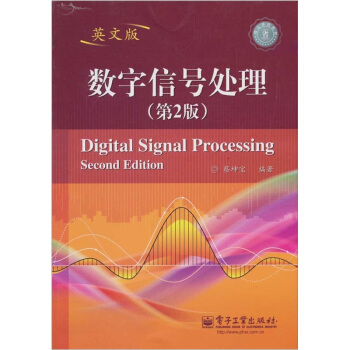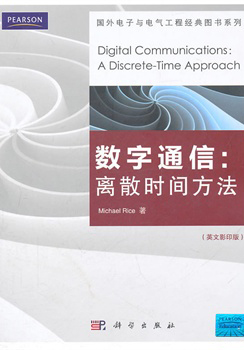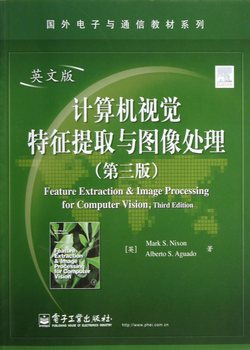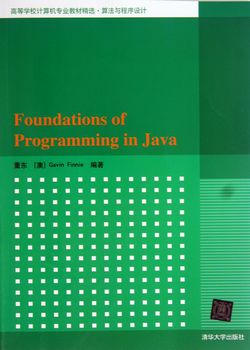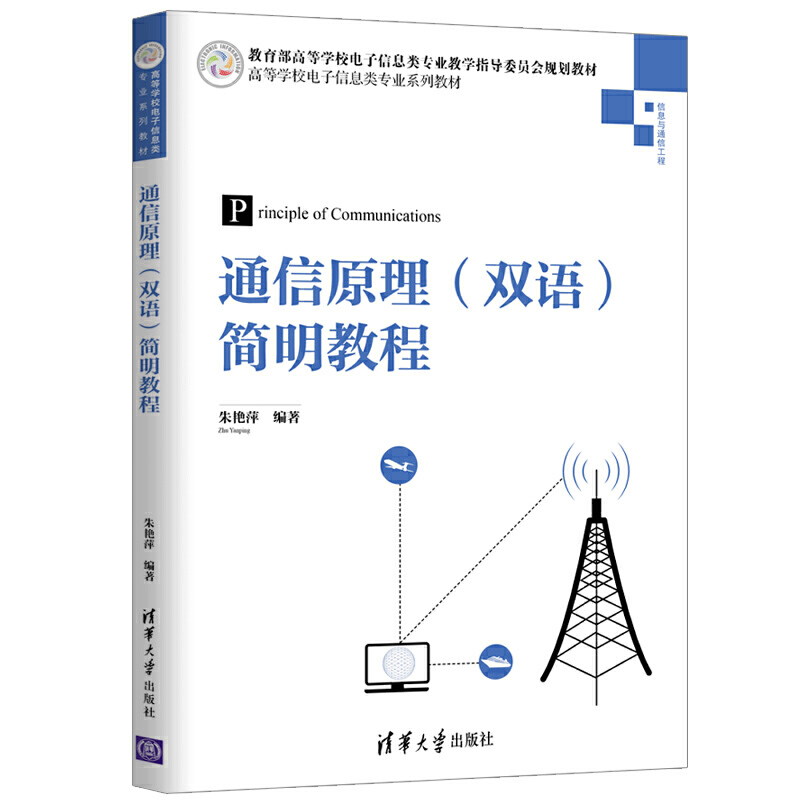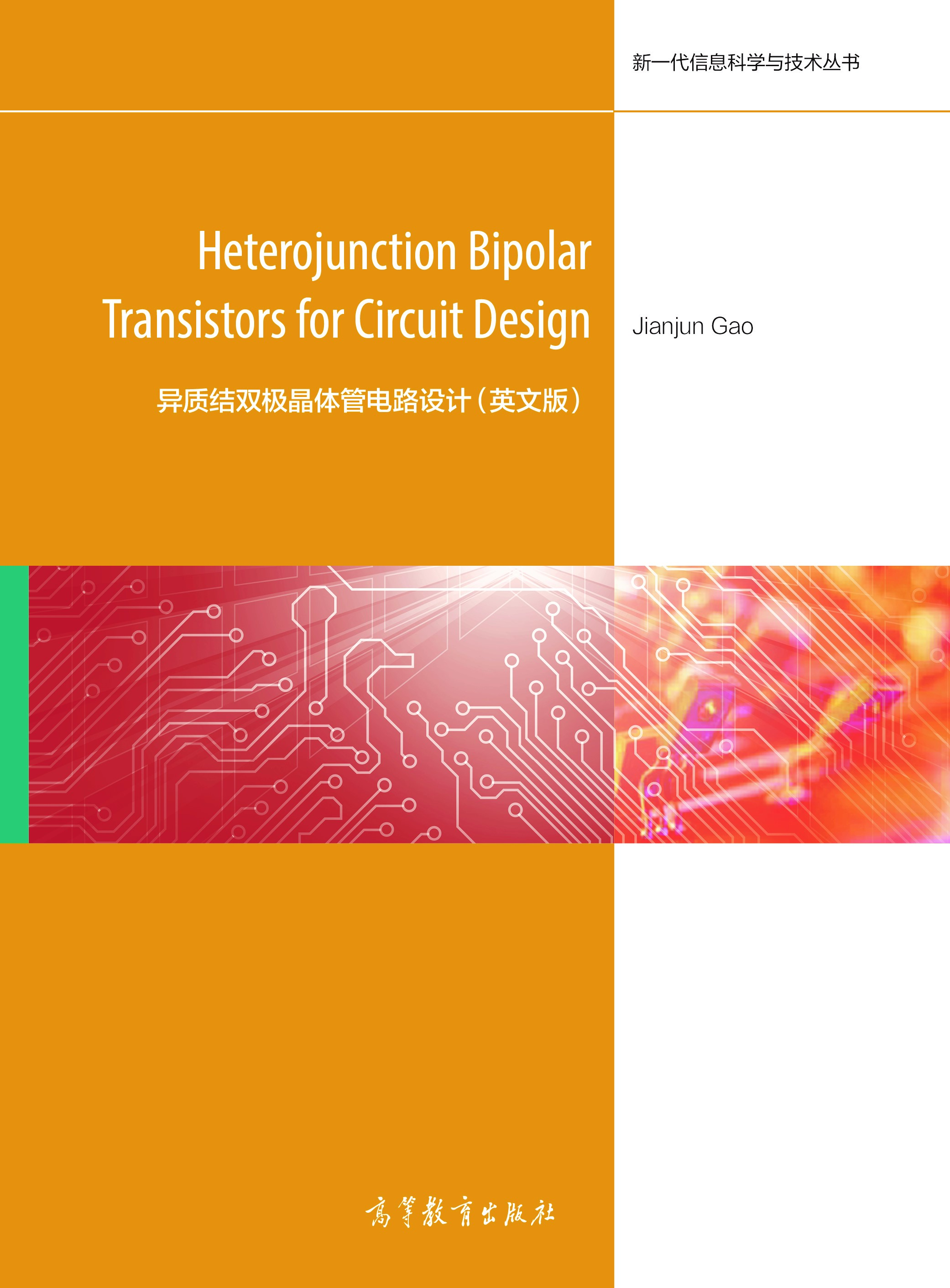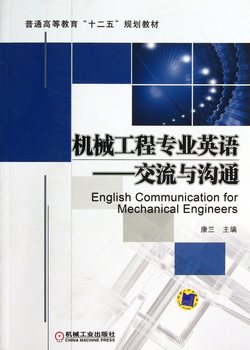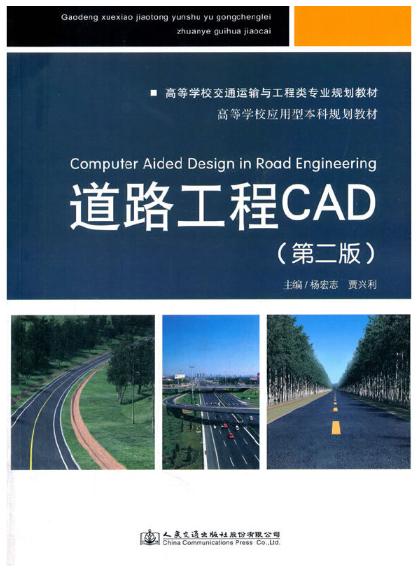数字信号处理:Digital Signal Processing Second Edition(第2版)(英文版)
作者: 蔡坤宝
出版时间:2011-03
出版社:电子工业出版社
试读
- 电子工业出版社
- 9787121129940
- 1-1
- 293891
- 46218574-5
- 平塑
- 16开
- 2011-03
- 832
- 332
- 电子信息工程(工学/理学)
- 本科 研究生(硕士、EMBA、MBA、MPA、博士)
《数字信号处理(第2版)(英文版)》可以作为电子与通信相关专业的本科数字信号处理课程中英文双语教学的教材,或中文授课的英文版教学参考书,也可供从事数字信号处理的工程技术人员学习参考。《数字信号处理(第2版)(英文版)》尤其适合初步开展数字信号处理课程中英文双语授课的师生选用。
1 introduction
1.1 what is a signal?
1.2 what is a system?
1.3 what is signal processing?
1.4 classification of signals
1.4.1 deterministic and random signals
1.4.2 continuous-time and discrete-time signals
1.4.3 periodic signals and nonperiodic signals
1.4.4 energy signals and power signals
1.5 overview of digital signal processing
2 discrete-time signals and systems
2.1 discrete-time signals: sequences
2.1.1 operation on sequences
2.2 basic sequences
2.2.1 some basic sequences
2.2.2 periodicity of sequences
2.2.3 representation of arbitrary sequences
2.3 discrete-time systems
2.3.1 classification of discrete-time systems
2.4 time-domain representations of lti systems
2.4.1 the linear convolution sum
2.4.2 interconnections of lti systems
2.4.3 stability condition of lti systems
2.4.4 causality condition of lti systems
2.4.5 causal and anticausal sequences
2.5 linear constant-coefficient difference equations
2.5.1 recursive solution of difference equations
2.5.2 classical solution of difference equations
2.5.3 zero-input response and zero-state response
2.5.4 the impulse response of causal lti systems
2.5.5 recursive solution of impulse responses
2.5.6 classification of lti discrete-time systems
problems
3 transform-domain analysis of discrete-time signals and systems
3.1 the z-transform
3.1.1 definition of the z-transform
3.1.2 a general shape of the region of convergence
3.1.3 uniqueness of the z-transform
3.2 relation between the rocs and sequence types
3.3 the z-transform of basic sequences
3.4 the inverse z-transform
3.4.1 contour integral method
3.4.2 partial fraction expansion method
3.4.3 long division method
3.4.4 power series expansion method
3.5 properties of the z-transform
3.6 the discrete-time fourier transform
3.6.1 definition of the discrete-time fourier transform
3.6.2 convergence criteria
3.6.3 properties of the discrete-time fourier transform
3.6.4 symmetry properties of the discrete-time fourier transform
3.7 transform-domain analysis of lti discrete-time systems
3.7.1 the frequency response of systems
3.7.2 the transfer function of lti systems
3.7.3 geometric evaluation of the frequency response
3.8 sampling of continuous-time signals
3.8.1 periodic sampling
3.8.2 reconstruction of bandlimited signals
3.9 relations of the z-transform to the laplace transform
problems
4 the discrete fourier transform
4.1 the discrete fourier series
4.2 properties of the discrete fourier series
4.2.1 evaluation of the periodic convolution sum
4.3 the discrete fourier transform
4.4 properties of the discrete fourier transform
4.4.1 circular convolution theorems
4.5 linear convolutions evaluated by the circular convolution
4.6 linear time-invariant systems implemented by the dft
4.7 sampling and reconstruction in the z-domain
4.8 fourier analysis of continuous-time signals using the dft
4.8.1 fourier analysis of nonperiodic continuous-time signals
4.8.2 practical considerations
4.8.3 spectral analysis of sinusoidal signals
problems
5 fast fourier transform algorithms
5.1 direct computation and efficiency improvement of the dft
5.2 decimation-in-time fft algorithm with radix-2
5.2.1 butterfly-branch transmittance of the decimation-in-time fft
5.2.2 in-place computations
5.3 decimation-in-frequency fft algorithm with radix-2
5.4 computational method of the inverse fft
problems
6 digital filter structures
6.1 description of the digital filter structures
6.2 basic structures for iir digital filters
6.2.1 direct form i
6.2.2 direct form ii
6.2.3 cascade form
6.2.4 parallel form
6.3 basic structures for fir digital filters
6.3.1 direct forms
6.3.2 cascade forms
6.3.3 linear-phase forms
problems
7 design techniques of digital iir filters
7.1 preliminary considerations
7.1.1 frequency response of digital filters
7.2 discrete-time systems characterized by phase properties
7.3 allpass systems
7.3.1 nonminimum-phase systems represented by a cascade connection
7.3.2 group delay of the minimum-phase systems
7.3.3 energy delay of the minimum-phase systems
7.4 analog-to-digital filter transformations
7.4.1 impulse invariance transformation
7.4.2 step invariance transformation
7.4.3 bilinear transformation
7.5 design of analog prototype filters
7.5.1 analog butterworth lowpass filters
7.5.2 analog chebyshev lowpass filters
7.6 design of lowpass iir digital filters
7.6.1 design of lowpass digital filters using the impulse invariance
7.6.2 design of lowpass digital filters using the bilinear transformation
7.7 design of iir digital filters using analog frequency transformations
7.7.1 design of bandpass iir digital filters
7.7.2 design of bandstop iir digital filters
7.7.3 design of highpass iir digital filters
7.8 design of iir digital filters using digital frequency transformations
7.8.1 lowpass-to-lowpass transformation
7.8.2 lowpass-to-highpass transformation
7.8.3 lowpass-to-bandpass transformation
7.8.4 lowpass-to-bandstop transformation
problems
8 design of fir digital filters
8.1 properties of linear phase fir filters
8.1.1 the impulse response of linear-phase fir filters
8.1.2 the frequency response of linear-phase fir filters
8.1.3 characteristics of amplitude functions
8.1.4 constraints on zero locations
8.2 design of linear-phase fir filters using windows
8.2.1 basic techniques
8.2.2 window functions
8.2.3 design of linear-phase fir lowpass filters using windows
8.2.4 design of linear-phase fir bandpass filters using windows
8.2.5 design of linear-phase fir highpass filters using windows
8.2.6 design of linear-phase fir bandstop filters using windows
problems
9 finite-wordlength effects in digital signal processing
9.1 binary number representation with its quantization errors
9.1.1 fixed-point binary representation of numbers
9.1.2 floating-point representation
9.1.3 errors from truncation and rounding
9.1.4 statistical model of the quantization errors
9.2 analysis of the quantization errors in a/d conversion
9.2.1 statistical model of the quantization errors
9.2.2 transmission of the quantization noise through lti systems
9.3 coefficient quantization effects in digital filters
9.3.1 coefficient quantization effects in iir digital filters
9.3.2 statistical analysis of coefficient quantization effects
9.3.3 coefficient quantization effects in fir filters
9.4 round-off effects in digital filters
9.4.1 round-off effects in fixed-point realizations of iir filters
9.4.2 dynamic range scaling in fixed-point implementations of iir filters
9.5 limit-cycle oscillations in realizations of iir digital filters
9.5.1 zero-input limit cycle oscillations
9.5.2 limit cycles due to overflow
9.6 round-off errors in fft algorithms
9.6.1 round-off errors in the direct dft computation
9.6.2 round-off errors in fixed-point fft realization
problems
10 multirate digital signal processing
10.1 sampling rate changed by an integer factor
10.1.1 downsampling with an integer factor m
10.1.2 decimation by an integer factor m
10.1.3 upsampling with an integer factor l
10.1.4 interpolation by an integer factor l
10.2 sampling rate conversion by a rational factor
10.3 efficient structures for sampling rate conversion
10.3.1 equivalent cascade structures
10.3.2 polyphase decompositions
10.3.3 polyphase realization of decimation filters
10.3.4 polyphase realization of interpolation filters
problems
appendix a tables for the z-transform
appendix b table for properties of the discrete-time fourier transform
appendix c table for properties of the discrete fourier series
appendix d table for properties of the discrete fourier transform
appendix e table for the normalized butterworth lowpass filters
references

